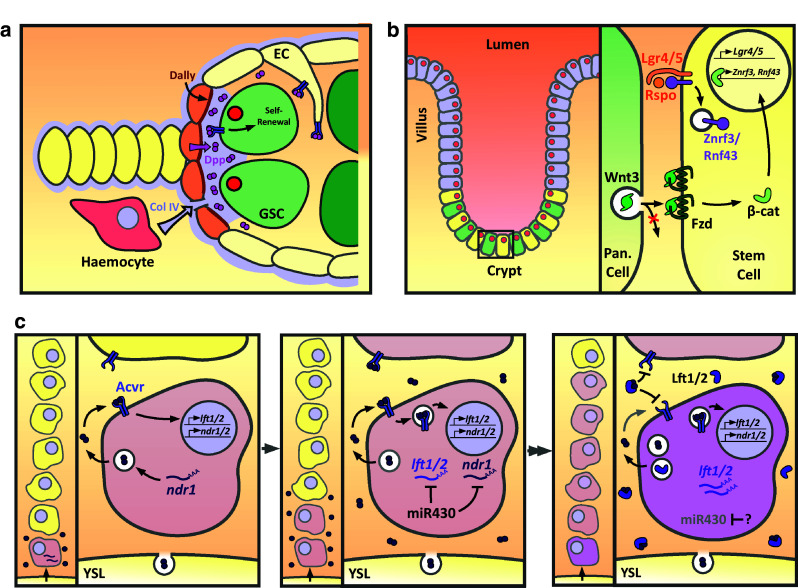Fig. 1.

Short-range signaling in tissue patterning. a Drosophila germline stem cell (GSC) identity is maintained by Dpp secreted by adjacent niche cap cells. Dally, secreted by and presented on cap cells, promotes short-range signaling possibly as a ligand co-receptor. Hemocytes also deposit collagen IV in between cap cells and GSCs, which binds Dpp and restricts its diffusion. Expression of the Tkv receptor on escort cells (EC) acts as a ligand sink. b Intestinal stem cell identity (yellow) is maintained by neighbouring Paneth cells (green) that secrete Wnt3. Wnt3 is bound by Fzd receptors on adjacent cells. Membrane clearance of the ubiquitin ligases Rnf43 and Znf3 is driven by the stem cell factors Lgr4/5 and R-spondin to maintain Fzd levels. c Left panel maternally loaded ndr1 in dorsal margin cells and yolk syncytial layer (YSL) ndr1 expression drives early Nodal signaling (pink) in the dorsal-most cells of the presumptive mesoendoderm. Middle subsequently a positive feedback loop potentiates the Nodal signal which begins to signal to adjacent cells. The ubiquitously expressed miR430 negatively regulates ndr1 and lft1/2 expression. Right by the 50% epiboly stage, miR430 expression is lost, enabling lft1/2 expression which inhibits further activation of Nodal signaling, thereby restricting the domain of responding cells to 5–6 cell tiers. The Nodal signal is maintained over several hours, potentially by signaling from internalised receptors. The cells that receive the signal for the longest (purple) have higher levels of pSmad2 resulting in graded signaling
